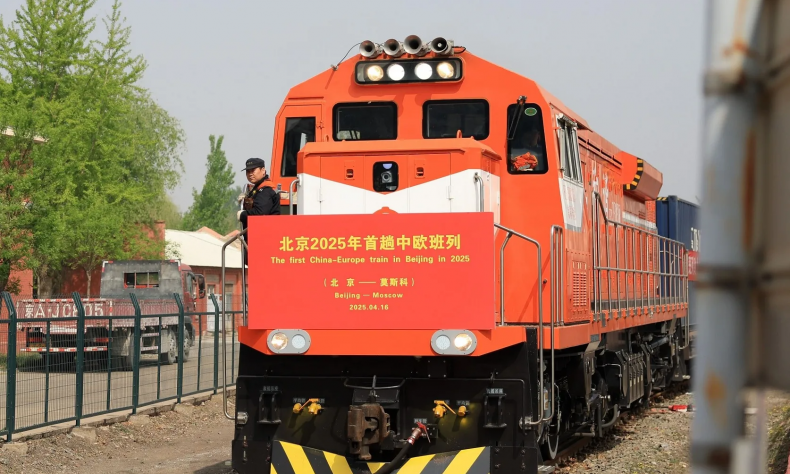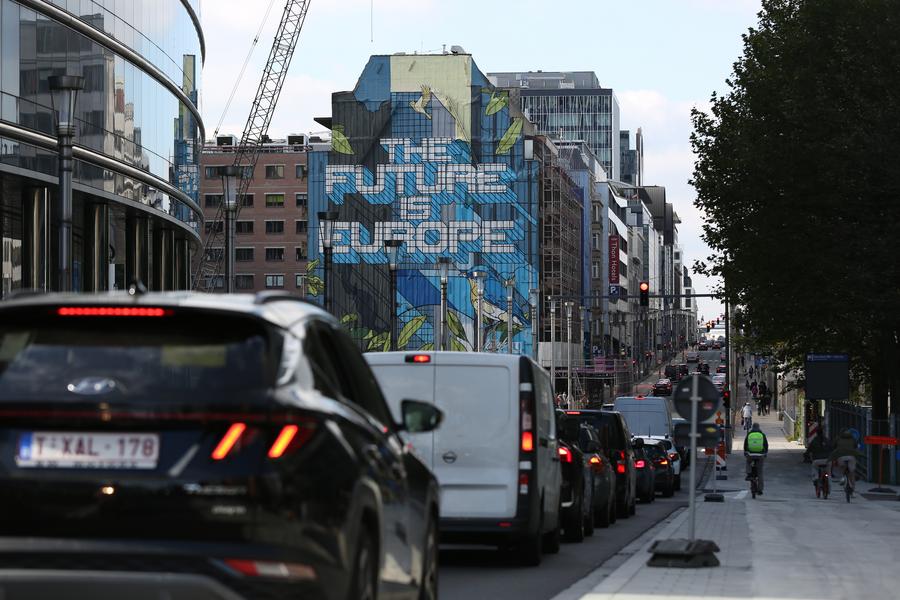Collaboration on the Eurasian Continent

Due to America’s growing isolation from global markets and Trump’s unpredictability, a partial strengthening of trade relations between Brussels and Beijing is possible.
U.S. President Donald Trump’s recent tariff pressures and isolationist measures are quickly uniting China, Europe and Central Asia.
“Solving the issue of U.S. import duties requires cooperation between Europe and China,” head of the European Commission Ursula von der Leyen stated during a telephone conversation with Chinese Premier Li Qiang on April 8. According to her, the European Union (an economic and political union between 27 European countries—Ed.) and China, as some of the largest global markets, must take responsibility for maintaining a strong and reformed trading system.
Searching for solutions
Von der Leyen emphasized that the current situation should be resolved through negotiations and that efforts must be made to prevent further escalation. During the conversation, the parties discussed structural solutions to restore the balance of bilateral relations, including increasing access for European enterprises to the Chinese market.
According to the World Bank, in 2024, the U.S. was the largest consumer, worth $18.8 trillion, while the EU’s market was worth $10 trillion, and China’s was worth about $7 trillion.
Relations between Europe and China have been increasingly strained in recent years. The two sides have frequently criticized each other over “unfair” trade practices. However, Trump’s policy of imposing tariffs on these two centers of global economic power is bringing them closer together.
There were early signs of a thaw last year. The EU imposed higher tariffs on Chinese electric vehicles. Still, China’s Ministry of Commerce stated in early April that both parties had agreed to resume talks. Olof Gill, the EU’s trade chief, then mentioned that the two sides had decided to “take a fresh look” at pricing.
Considering Trump’s rhetoric during the election campaign, particularly in the early weeks of his presidency, European policymakers have shown interest in fostering closer economic cooperation with China. “We must engage constructively with China,” von der Leyen stated in a speech at the World Economic Forum Annual Meeting in Davos, Switzerland, in January. She discussed the potential for expanding trade and investment ties “wherever possible.”
Filling the potential loss of the U.S. market with the Chinese market will be impossible, as China and the EU have increasingly drifted apart in recent years. However, due to America’s growing isolation from global markets and Trump’s unpredictability, a partial strengthening of trade relations between Brussels and Beijing is possible.
European leaders are evaluating the potential of signaling stronger ties with China as leverage to sustain relations with the U.S. This strategy is expected to yield temporary tactical advantages. Despite Europe’s challenges, it retains some vital cards in the U.S.-China-Europe triangle.

Linking arms
Interestingly, the Trump administration believes the EU imposes a 39-percent tariff on the U.S. According to Trump, the U.S. will charge the bloc 20 percent, which would be “good reciprocal” tariffs. In fact, more than 70 percent of imports to the EU are exempt from duty. According to the World Trade Organization, on a trade-weighted basis, EU tariffs average only 2.7 percent.
Around the same time, on April 4, the Central Asia-EU Summit took place in Samarkand, Uzbekistan. It was attended by the President of the European Council António Costa, von der Leyen and presidents of the five Central Asian countries: Kazakhstan, Kyrgyzstan, Tajikistan, Turkmenistan and Uzbekistan. The summit was initially set for 2024 but was postponed due to last year’s European Parliament elections and the consequent change in EU leadership.
The EU’s growing interest in Central Asia has quadrupled total trade turnover over the past seven years, reaching 54 billion euros ($61.5 billion).
Von der Leyen stated at the summit that strong relations with Central Asia are a key component of the EU’s policy to diversify foreign trade, which Europe is pursuing to mitigate the effects of the tariff war initiated by Trump on April 2. She referred to Central Asia as a “preferred partner.” The discussions in Uzbekistan focused on trade relations, transport cooperation, critical raw materials, digital communications, water and energy.
The most crucial topic of discussion at the summit centered on investments in developing the Trans-Caspian Transport Corridor (TCTC), also known as the Middle Corridor. This corridor began to take shape in 2013, connecting China, Central Asian countries and, via the Caspian Sea, Azerbaijan, Georgia and European countries.
On March 13, in Astana, capital of Kazakhstan, the European Investment Bank (EIB) and the Development Bank of Kazakhstan signed a framework loan agreement, under which the EIB will invest 200 million euros ($227.6 million) in the TCTC. Europe is prepared to invest more than 10 billion euros ($11.38 billion) in this project.
The total partnership program between the EU and Central Asia for the 2021-27 period will see an investment of 567 million euros ($645.4 million).
Europe is experiencing difficult times. Where should it go in the long term? Suppose there is no hope of Western support. In that case, Europe should look East, not necessarily (yet) to Russia, but to the broader landscape of rapidly developing Central Asia, China and Southeast Asia.
The rapid development of transportation and logistics links between these regions via various railways will undoubtedly help the Eurasian continent become a driver of global economic growth.
Central Asia could serve as the ideal bridge to a prosperous future for the entire continent in this new reality.
The author is former prime minister of Kyrgyzstan, a distinguished professor of the Belt and Road School at Beijing Normal University and author of the book Central Asia’s Economic Rebirth in the Shadow of the New Great Game.
 Facebook
Facebook
 Twitter
Twitter
 Linkedin
Linkedin
 Google +
Google +










